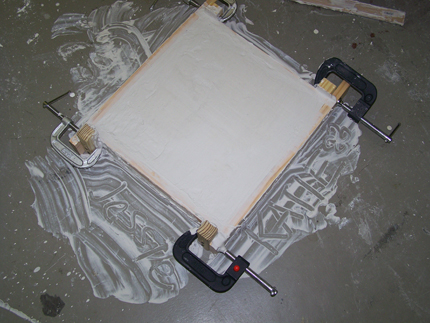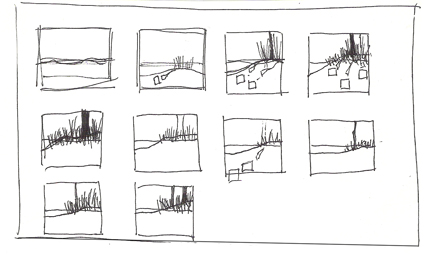Prototype III
[framework]:
Our third prototype involved continuing the development of our plaster topographical panels. Using the Analog: Digital New Orleans project as a precedent, we were able to refine the frame for our plaster mold.
We utilized 2x4s held together by c-clamps to make the frame easier to put together, take apart, clean, and reuse for multiple plaster pours.
We also experimented with the plaster-to-water ratio; we worked on finding a consistency that was thin enough to allow manipulation after a pour, but thick enough so that the plaster would set within thirty minutes. We found that good plaster consistency was imperative for a clean model, and efficient use of time when pouring multiple panels.
We also tried different types of releasing agents; instead of vaseline, we used non-stick pan spray for this prototype. Unfortunately, the use of butter flavor spray contributed to a slight yellow tinge to the plaster panel; and in the end we found the use of vaseline to be more successful in achieving a clean-looking panel.
[experience]:
We worked on ideas of how to incorporate the experience of deltaic wetlands into our project. The idea is to create sections of deltaic wetlands that include location images from the animation. To demonstrate the role of sediment from different parts of the country in creating the delta environment, images used in the animation to provide context will be incorporated into the delta image, washing on shore and fading away to represent deposition and erosion.


